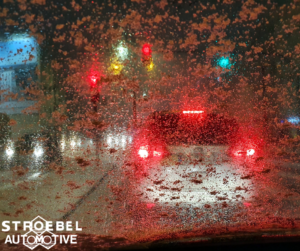Winter driving is a necessary evil, but it can also be dangerous. The cold weather and snow storms can make road conditions worse than normal, and you need to prepare yourself properly so that you can survive them. In addition to making sure that your car is ready for winter driving conditions, there are some steps you can take as a driver so that you don’t endanger yourself or others on the road:
Get your vehicle ready for winter.
Before you go out, ensure your vehicle is ready for winter. Here’s a list of things to check:
- Tire pressure. Check the pressure in all four tires and inflate them to the recommended PSI (pounds per square inch) on the door jamb or fuel door sticker. If you’re unsure what PSI should be, look online or ask a mechanic at a local shop where they recommend putting your car’s tires during this time of year.
- Windshield wipers and fluid level–If they’re not working correctly, it could mean that there’s something wrong with your wiper blades or the wiper fluid reservoir needs refilling with fresh washer fluid so they can keep doing their job effectively when snowflakes start falling from the sky!
- Battery–Make sure your battery is healthy before winter hits by having it tested by an auto technician; if there are signs of corrosion on terminals or cables (which could indicate corrosion within), consider having them replaced before driving anywhere far away from home since batteries need regular maintenance if we want them to last long enough before needing replacement again down road years later when we may not have access -or money-to drive far away anymore
Be alert to other drivers on the road who may be unprepared.
This is the time of year when many people are eager to get home and enjoy the holidays with their loved ones. Unfortunately, this can lead to forgetfulness or inattention on the part of other drivers who are focused on getting home quickly and safely. If you see someone driving too fast for conditions, it’s best to slow down yourself so as not to put yourself at risk by tailgating them.
Be aware that there may be inexperienced drivers on the road–people new to your area or new drivers overall–and use extra caution around them because they may be unfamiliar with driving conditions in your area or how slippery it can get when ice forms on roads during winter weather conditions like snowstorms or sleet storms (which are also common during this time of year).
Keep your gas tank full.
When driving, it’s always important to have enough gas to get you to a safe place if needed. Running out of fuel in the middle of nowhere could be dangerous and even life-threatening. You don’t want to be stranded on the side of the road during bad weather conditions or at night when visibility is low.
To prevent this from happening:
- Keep your tank at least half full at all times (unless otherwise advised by your car’s manufacturer).
- Consider keeping extra gallons in storage at home so that, if necessary, they can be used for refilling purposes on short notice.
Change your air filter regularly.
Changing your air filter regularly is a good way to keep your vehicle running smoothly. A dirty air filter can cause problems with the engine, including loss of power and reduced fuel economy.
If you don’t know how to change an air filter in your car, take it to a mechanic or ask someone who does know how. You should also check with them if changing the filter will void any warranties on your vehicle’s parts or systems (such as emissions).
Carry a tire gauge and know how to use it.
The winter season is here; you know what that means: more snow, ice, and rain! While driving in these conditions can be a challenge for anyone, it can be downright dangerous if you don’t have the right tires for the weather and terrain (or if your current ones are worn out).
To help keep yourself safe on the road this winter season, follow these tips:
- Know how to use a tire gauge. A tire gauge measures air pressure in tires so that they’re at optimum levels–something every driver should know how to do before hitting the road. You can buy one at any hardware or auto parts store; just look for one with an easy-to-read dial face and wide handle grip to be comfortable with gloves on (or bare hands). Take advantage of free services offered by many gas stations or truck stops; most will have free air pumps available where customers can check their own tires.
Check your car battery and cables.
If your car is having trouble starting, the battery may be old and need to be replaced. If you’re unsure whether it’s time for a new one, check the terminals on your battery: they should be clean and tight. If there are any loose parts or corrosion, tighten them with pliers before starting the engine again.
If your vehicle starts without issue but dies immediately after driving for about five minutes or so, it could mean that something is draining power from the battery.
Before driving, clean off snow, ice, and salt from the windows, lights, and mirrors.
- Before driving, clean off snow, ice, and salt from the windows, lights, and mirrors. This can be done with a scraper, or if you have a car wash near you, simply drive through it.
- Ensure that headlights are clean so other drivers can see you at night.
These tips can help you have a safer winter driving experience this year!
When you’re driving in the winter, it’s important to have a plan. Your first step should be ensuring your vehicle is ready for the season.
If you do get stuck in bad weather or snow, don’t panic, and try not to panic! Stay calm and assess what has happened–you may just need some help getting out of where you are stuck. If no one is around or able to help, then call someone who can assist with finding another way out of where they are stuck (or simply call 911).
In addition to following these tips, we recommend checking in with your local auto repair shop as often as possible. They can help keep your car safe on the road and give you peace of mind during this busy season.


